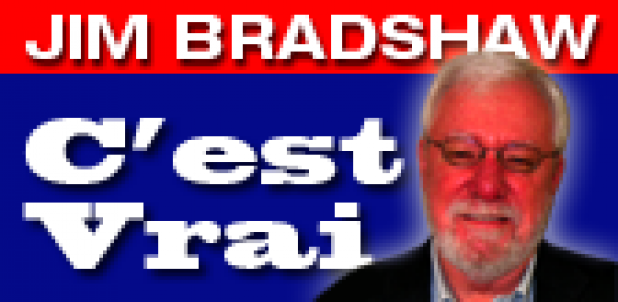
Jim Bradshaw: 'Rainbow fragments' return for summer ballets
By JIM BRADSHAW
A summer-long ballet begins in April when hummingbirds return to south Louisiana.
The naturalist and artist John James Audubon called them “glittering fragments of rainbows.”
The poet D. H. Lawrence observed, “It is a creature of such fairy-like loveliness to mock all description.”
The “flower kissers,” as Brazilians call them, were considered gifts from the gods by Native Americans.
Naturalists have cataloged more than 300 species and think there are more to be found, but probably not here.
The ruby-throated hummer is the one most likely to be seen in south Louisiana; most of the others prefer other places.
But these are enough.
As they do an aerial dance, darting from feeder to flower, it is easy to understand why very few things in nature catch the eye like these tiny birds.
When they pause mid-flight in a ray of sunlight, they do indeed stir images of rainbows, jewels, and the realm of fairies.
According to my well-thumbed copy of George Lowery’s Louisiana Birds (LSU Press, 1955), only the males have the distinctive red patch that gives the ruby-throat its name.
The color has to do with the way the sun strikes their tiny throat feathers.
He says one of the most remarkable things about these little birds is the tiny, elaborate nests they build, “bedecked on the outside in the most delicate fashion with lichens and moss,” all of it held together with cobwebs.
'"The nests are just big enough to hold two eggs “no larger in diameter than a lead pencil.”
We keep a feeder within sight of our screened “sittin’ porch” and another one just outside the kitchen window, and keep them half-full of a solution of sugar and water (1/4 cup of sugar to 1 cup of water for each feeder).
We used to fill the feeders to the top, but have found that the nectar will sour quickly in summer heat and it’s better to fill them more often.
That also means the feeders are cleaned more often and there is less invasion by sap-loving bugs.
The sugar should be thoroughly dissolved in the water and you should bring the mixture to a boil, but don’t keep it boiling.
That will cause water to evaporate and concentrate the sugar more than you want.
We don’t use artificial coloring; it seems to make no difference to the hummers and we have a natural aversion to adding unnecessary things to food.
Be sure the mixture is good and cool before putting it into the feeders.
Also, hang the feeders higher than your cat can jump.
The hummers flit from here to there at warp speed, but they also will hover in one place while contemplating their coming meal.
That little pause can be fatal if the bird isn’t out of a leaping cat’s reach.
From childhood I have associated hummingbirds with the honeysuckle vines that grew wild on our back fence, and just about any place else they wanted to grow.
The blooms not only attracted hummers, but colorful butterflies, and all sorts of tiny critters for a curious kid to study.
We have some other plants that hummers like, but we don’t have honeysuckle in our yard today, and I am glad about that.
It is delicate, and sweet smelling, and colorful — and an invasive, troublesome, nuisance that will take over your yard if you let it.
I wish it wouldn’t grow like that, that it would behave a little better — the hummers would like that and so would I.
But, even without any to jog my memory, I can still recall how I pulled the honeysuckle flowers apart and got a tiny sip of the sweet nectar cupped in them, and a taste of what makes hummingbirds dance and flit and show off.
It almost makes me want to plant some.
But just almost.
A collection of Jim Bradshaw’s columns, Cajuns and Other Characters, is now available from Pelican Publishing. You can contact him at jimbradshaw4321@gmail.com or P.O. Box 1121, Washington LA 70589.
